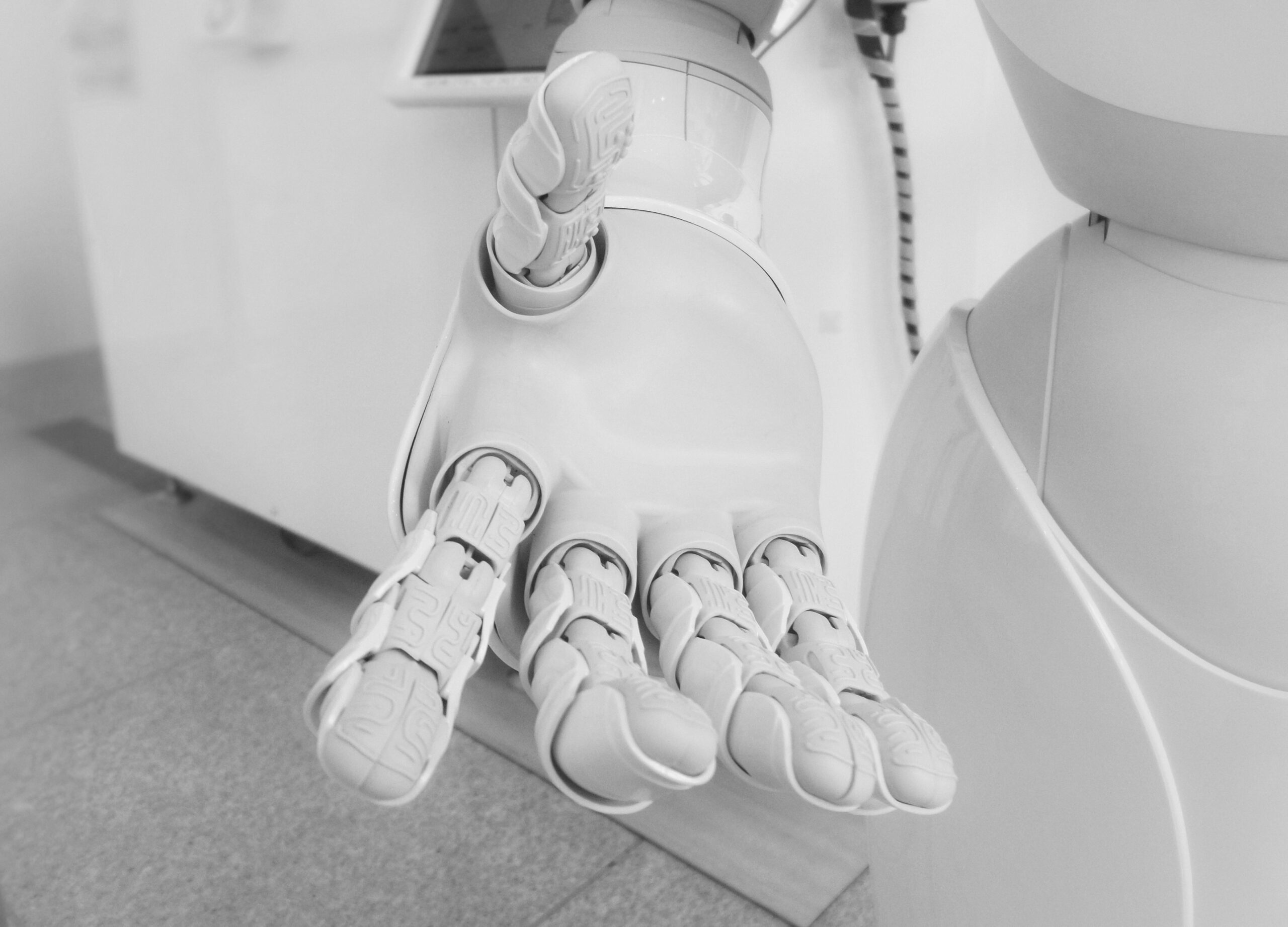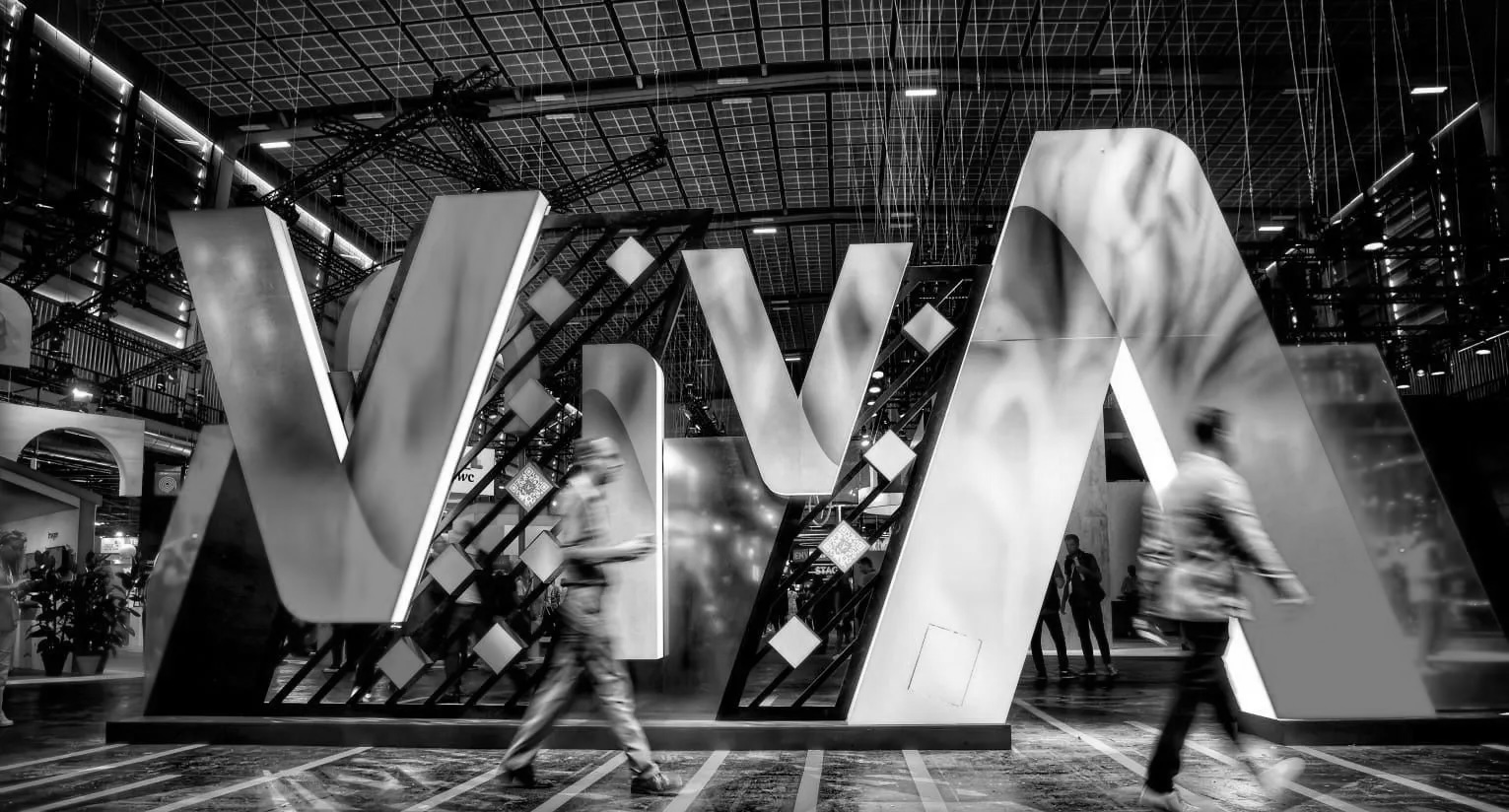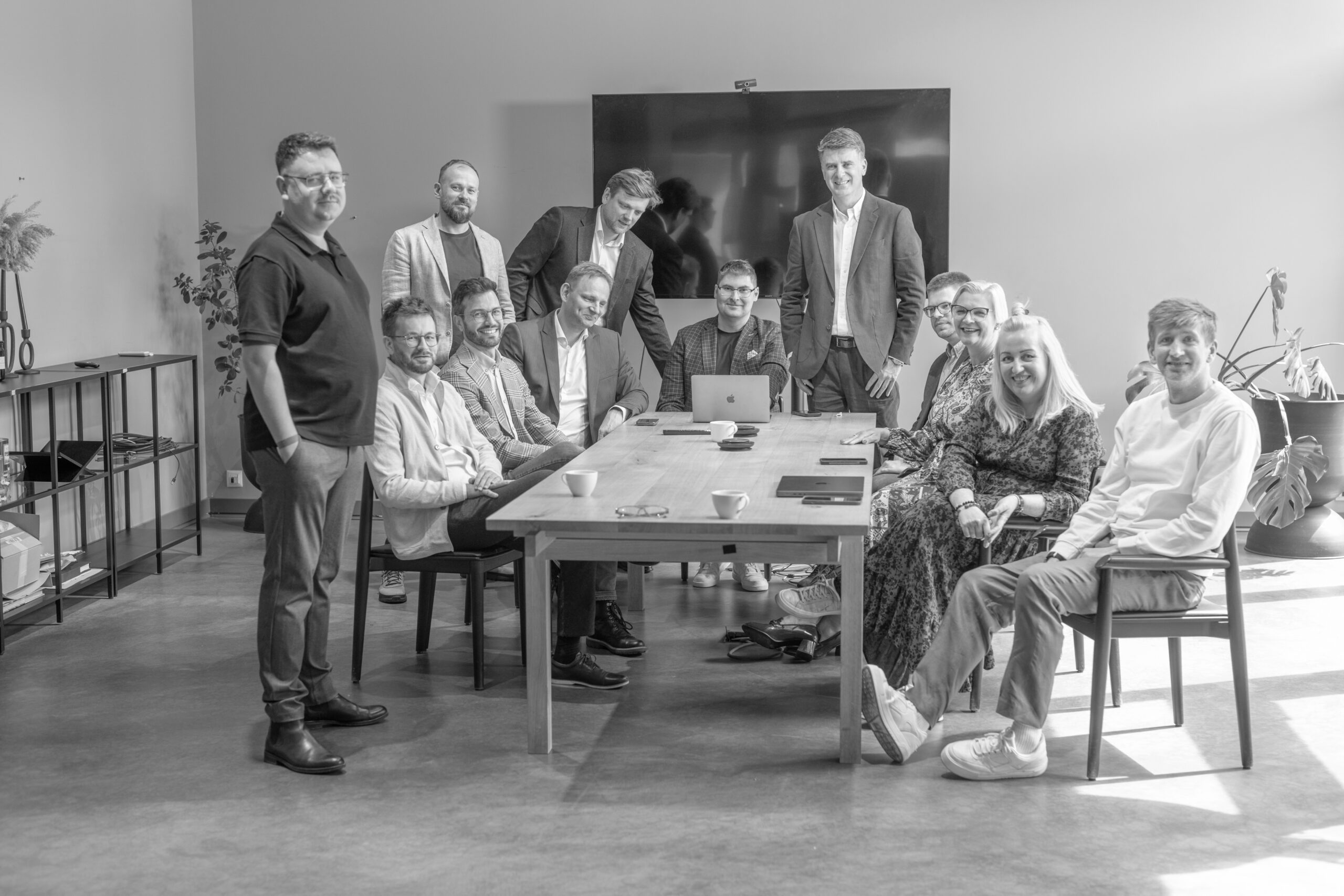AI. Just two letters, but so much commotion. When we think about artificial intelligence, we often quickly shift to ambivalent thoughts. On one hand, we see the positives: optimized information searches, easier email writing to the boss, lots of fun, and creative space—”draw me a dog,” or showing “what I will look like when I’m old.” But on the other hand, there’s fear: data theft, mistrust of the accuracy of generated content, or the vision of robots taking over the world, the specter of HAL9000 from 2001: A Space Odyssey.
01
We often push away the thought that AI surrounds us, and we’ve been using it for a long time… Spotify suggesting the next song based on your playlist, that one song from YouTube in 2010 that everyone knew for the same reason, NPCs in games—it all sounds familiar. Yet, we still instinctively fear what is unknown and not fully understood—the “monster under the bed.” But do we all approach AI the same way? How do different generations perceive AI?
Among the Baby Boomers (BB), there are those who either don’t see the monster or don’t want to look at it and deliberately avoid it, occasionally and unknowingly falling into its trap. Generations X and Y often want to forget that the monster under the bed exists, as long as it provides them with convenience (after all, Netflix suggesting the next series isn’t unfamiliar or threatening to them). There are also those who really want to understand it and consciously use its power. The situation changes with younger generations, starting with Gen Z. Under Gen Z’s bed, there’s also something, but it’s not a “monster.” It’s their favorite slippers. For them, AI is not a threat; it’s potential, a means, a tool. In this case—the potential for warm feet on the way to get water in the middle of the night. Sure, you could freeze. But Gen Z simply asks: why?
At this point, it’s good to outline what AI currently has to offer, something you can take advantage of as soon as you finish reading this sentence. AI offers more than we assume, because its development is dynamic, as are the ever-multiplying proposals for its use coming from its users. From preparing a recipe for dinner consisting solely of leftover ingredients that have been in the fridge for a few days, and suggesting workout plans, to perhaps the most popular, rephrasing—how to write what I want to say, but better (shorter, longer, more poetic, or professional, depending on the need). Using AI for personal purposes is not just the domain of private individuals; less or more visible signs of AI usage are also evident in the business sector. Until recently, these connections remained rather in the shadows, mainly concerning algorithmization and process optimization (such as setting ride prices by mobile transport apps like Uber) or analytics and predicting the next decisions based on previously gathered consumer data (the consumer insight used by Coca-Cola in the marketing campaign “Share a Coke” was partly based on data analysis conducted by AI). Now, however, not only using AI in business but also communicating its usage has become a normalized practice, recently even used as an element to attract audiences. Meta recently introduced a series of chatbots, AI-managed profiles on Instagram and Facebook, using the images of well-known pop culture figures (Kendall Jenner, Snoop Dogg, Charli D’Amelio) to create AI influencers. By combining familiar faces with the trending topic of AI, Meta creates engagement that is hard to ignore. Recently, there was also much talk about the AI influencer Aitiana Lopez, created by the agency The Clueless. Media reported that in November 2023, she had 120,000 followers and earned the agency 4,000 euros. Currently (December 2023), her Instagram profile is followed by 228,000 people…
02
Gen Z, as the first generation raised with technology, is undoubtedly more aware than any previous generation of the use of their data in developing algorithms that enhance AI. They don’t feel actively robbed of their data; rather, they passively accept this order in exchange for highly personalized content, which they are accustomed to and expect more or less consciously. A clear shift in the nature of online entertainment is the best example of this. The era of waiting for a video from a favorite YouTuber is fading away; a well-functioning For You Page will show the same TikTok to you, your friends, and people like you. So, it’s not about simple popularity, virality, or focus on the creator of the content, but rather about very specific cultural codes, systems of meanings—often narrow but strongly active within a given audience group.
Another interesting phenomenon is evident in the above example. Raised in the spirit of “always be yourself,” Gen Z is almost besieged by the compulsion to “be yourself,” which is why they most often want to “be themselves” together, in a group. They achieve this, among other things, through aesthetics and “cores” that connect young people, often appearing in online spaces as (micro) trends. And now you might say that this is typical of young people, that such mechanisms as fashion, subcultures, and their “special” ways of communication and self-expression have always existed. And you are right—the phenomenon we are observing is similar in its way! We’re not reinventing the wheel here; rather, we want to show how much potential Gen Z has for developing their own codes thanks to AI. Filters, music generation, or using graphic programs like Midjourney are new formats, intuitive to use, and producing a unique, personalized effect for the individual, carrying meanings accessible to a particular group of recipients, which can be easily shared. However, there is one clear problem: is what I created really mine?
03
And here we come to a point where it’s worth noting that the symbiosis of Gen Z with new technologies is not without its own fears and concerns. However, this area of tension is different from what previous generations experienced. Gen Z’s attachment to personalization is tied to an awareness and respect for copyright, which becomes a difficult topic in the context of creating with AI-based tools. The activism embedded in this generation’s culture cannot be overlooked, whether we support young people’s voices on important issues or mock their engagement through Instagram infographics. It’s important to emphasize that Gen Z is particularly sensitive to design issues, which is also evident in another point of tension. The visual aspect of a project always provides additional information, which for an eye accustomed to the internet is as clear as its content. Comic Sans is synonymous with irony, and pop-up ads saying “you’ve won an iPhone” aren’t convincing partly because of the hundred exclamation points and the flashing balloon GIF. AI, in the visual context, often doesn’t handle codes well that suggest to the recipient a quick classification of content, making the Gen Z audience, used to user-centered design, feel significant discomfort—the effect often doesn’t resonate with anything the recipient can immediately relate to. The inability to clearly understand and judge whether something was created by a human or by AI causes a similar feeling that, in cases of potential content creation using deepfake technology, turns into anxiety. Just as Generations X and Y had to learn to distinguish clickbait and the misinformation spread through it, Gen Z must develop the skill to recognize deepfakes.
MYTH BUSTERS
AI and Generation Z – Tips for Business and Communication:
Gen Z Are Conscious AI Users: For Gen Z, using AI is a deliberate choice. They can choose to change, block, or log out at any moment.
Normalization of AI in Brand Messaging: Gen Z is already there; AI is a natural part of their world.
We Don’t Create For, We Create With: Gen Z needs a “playground,” a space to create, express themselves, experience, and be part of a community. Good AI provides these opportunities.
Respect for Copyrights and Citation: It’s important to ensure proper citation and respect for intellectual property rights.
The Cyber/AI World Is Not Just an Escape from Reality: It’s an extension of the “analog” world, offering the possibility of experiencing the unexperienceable and achieving the impossible.
—
Authors: Katarzyna Wojna, Agnieszka Warzybok





